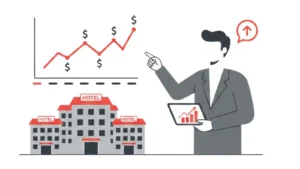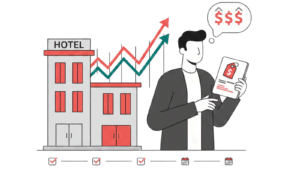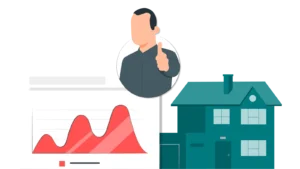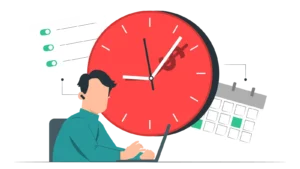Updated : Jun 26, 2025
Boutique and independent hotels are discovering innovative ways to maximize their revenue, with dynamic pricing strategies leading the charge. Dynamic Pricing in Hotels is not just a buzzword; it’s a proven method that can significantly enhance profitability. According to a study by ResearchGate, hotels employing dynamic pricing strategies saw an average revenue increase of 6-10% compared to those using static pricing models. This approach allows hotel owners and managers to adjust room rates in real-time based on demand, competition, and market conditions, ensuring they capture every opportunity for revenue growth.
What is Dynamic Pricing?
Dynamic pricing in hotels is a strategy that allows you to adjust room rates in real-time based on various factors such as demand, competition, seasonality, and market trends. Think of it as a way to maximize your revenue by ensuring your room prices reflect the current market conditions. Instead of sticking to a fixed rate, dynamic pricing gives you the flexibility to increase rates during peak times when demand is high and lower them during off-peak periods to attract more guests. This approach not only helps in optimizing occupancy but also ensures that you’re making the most out of your available room inventory.
Now, if you’re wondering how to implement dynamic pricing in your hotel, don’t worry—there’s plenty of technology out there to help. A number of tools are specifically designed for dynamic pricing in hotels. These tools analyze market data, competitor pricing, and booking trends to suggest optimal pricing strategies. They take the guesswork out of setting rates and allow you to focus on providing exceptional guest experiences. By leveraging these technologies, boutique and independent hotels can stay competitive and drive revenue more effectively.
PriceLabs helps independent hotels like yours optimize pricing with data-driven automation, ensuring you’re never underpriced or leaving money on the table. With easy setup, seamless PMS integration, and full pricing control, you get more revenue with less effort.
Here’s how PriceLabs makes pricing effortless:
- See what competitors are charging so you can price smarter.
- Automate rate updates based on demand, seasonality, and occupancy.
- Easily adjust prices in bulk across all units in seconds.
Why Dynamic Pricing?
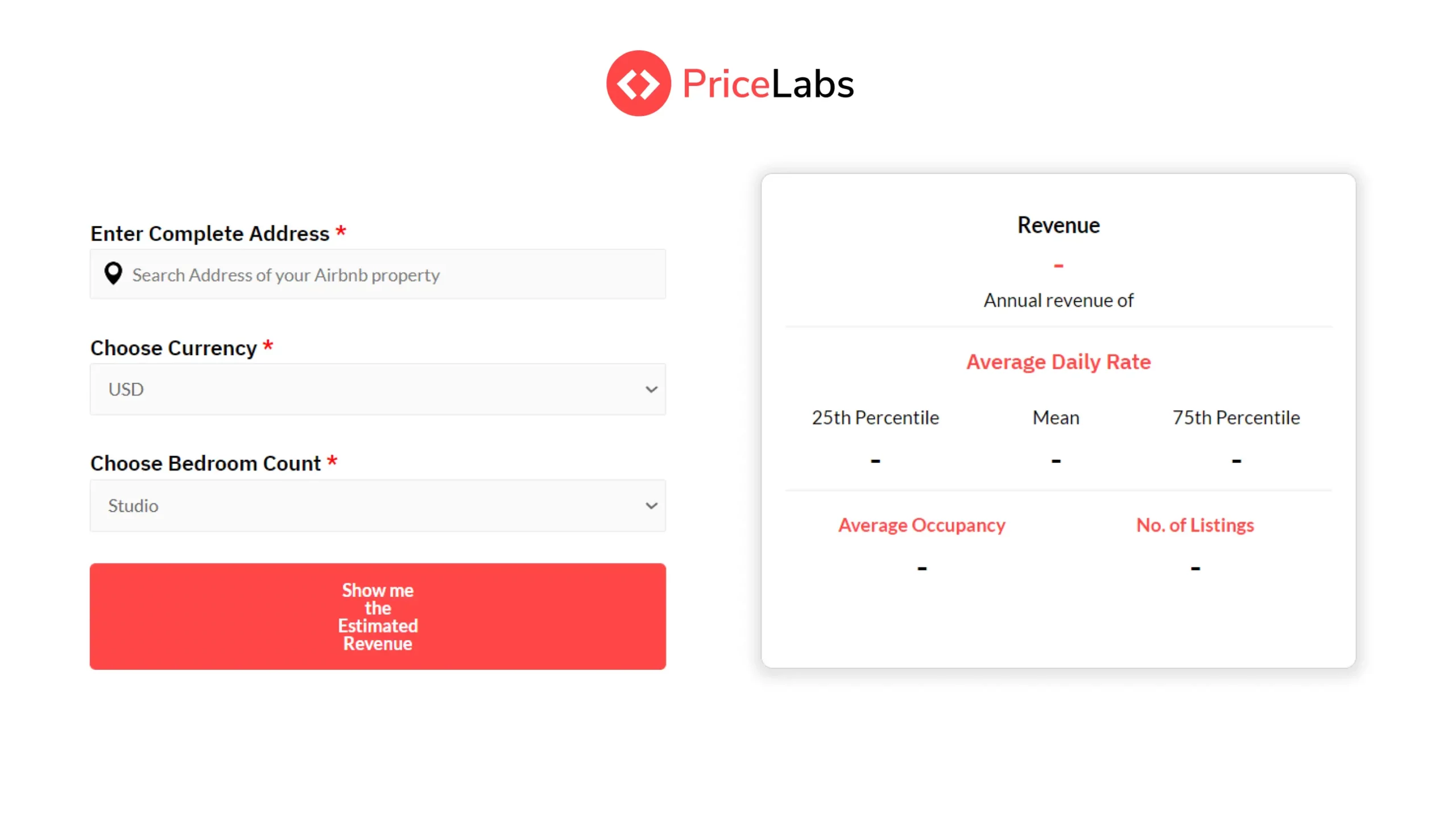
1. Maximize Revenue Potential
Dynamic Pricing in hotels allows you to adjust room rates in real-time based on demand, competition, and market conditions. By doing so, you can ensure that you’re charging the optimal price at any given moment, capturing additional revenue that might otherwise be left on the table. For independent hotels, this means maximizing every booking opportunity without the resources of a large chain.
2. Improve Occupancy Rates
By strategically lowering prices during low-demand periods and raising them during high-demand times, you can boost occupancy rates throughout the year. Independent hotels benefit significantly from this approach, as it helps maintain steady cash flow and ensures rooms are rarely left empty.
3. Enhance Competitive Edge
In a market crowded with big players, Dynamic Pricing allows independent hotels to remain agile and responsive to market changes. This flexibility means you can quickly adapt to competitor pricing strategies and capture guests who might be swayed by price differences.
4. Increase Customer Satisfaction
Offering competitive pricing through Dynamic Pricing can attract a diverse range of guests looking for the best value. For boutique and independent hotels, this means building a loyal customer base that appreciates both your unique offerings and fair pricing that leads to increased customer satisfaction.
5. Optimize Marketing Strategies
By understanding pricing trends and guest behavior through Dynamic Pricing data, you can tailor marketing efforts more effectively. Independent hotels can leverage this insight to create targeted promotions that resonate with their specific audience, driving more direct bookings.
Here’s what happens when hotels switch to PriceLabs
- Hotels using dynamic pricing see up to 18% higher RevPAR in their first year.
- Smart automation adjusts prices daily based on demand and competition.
- Stay ahead of the market with real-time competitor insights.
Embracing Dynamic Pricing in hotel management isn’t just about staying competitive; it’s about thriving as an independent entity in a dynamic industry landscape.
Gateway Accommodation Solutions X PriceLabs
Here’s a short case study about how Gateway Accommodation Solutions boosted peak monthly revenue by 10% using PriceLabs:
About Gateway Accommodation Solutions
Gateway Accommodation Solutions is a standout in the world of aparthotels, corporate stays, and boutique hotels. Known for its presence across various UK regions like Southampton and Somerset, the company is now venturing into leisure-focused retreats. Their secret weapon? Dynamic Pricing in hotels, powered by PriceLabs.
Challenges Faced by Gateway Accommodation Solutions Before Implementing Dynamic Pricing
Managing revenue across multiple locations and property types is no small feat, and Gateway Accommodation Solutions knew this all too well. They faced a series of challenges that made their existing pricing strategy less effective.
Diverse Market Segments
They served a diverse range of market segments, catering to both corporate and leisure travelers. This diversity meant they needed distinct pricing strategies to optimize revenue from each group. Without Dynamic Pricing in Hotel operations, it was tough to tailor rates effectively for these different segments.
Shorter Booking Window
More guests were booking at the last minute, leaving Gateway scrambling to adjust rates manually. This approach was not only time-consuming but also inefficient, often missing out on potential revenue boosts that Dynamic Pricing in Hotel settings could have captured.
Dealing with calendar gaps and stay restrictions
Managing orphan nights and optimizing minimum stay policies across multiple properties took up valuable time and resources. Without a dynamic approach, these tasks became cumbersome and often led to missed opportunities.
Scalability
Scalability issues loomed large as Gateway expanded into new markets. Manual revenue management quickly became unsustainable, highlighting the urgent need for a more automated and flexible solution like Dynamic Pricing in Hotel management.
These challenges underscored the need for a shift towards a more dynamic approach, paving the way for solutions like PriceLabs to revolutionize their revenue management strategy.
Implementation and Results
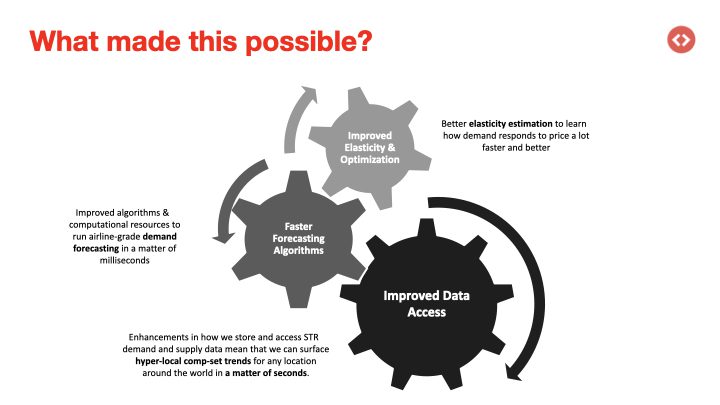
When Gateway Accommodation Solutions decided to embrace dynamic pricing, they turned to PriceLabs for a complete overhaul of their revenue strategy. Here’s what they achieved:
Improved Revenue Optimization
With PriceLabs, they could make data-driven pricing decisions that adapted to ever-changing demand trends. This meant their rates were always perfectly aligned with market conditions.
Revitalizing a Closed Hotel
Take The Madison, for example. After being closed for 13 long months during the pandemic, it reopened with dynamic pricing strategies in place. The result? A remarkable 10% growth in peak revenue and a whopping £45K in monthly sales by September 2024.
Operational Efficiency
Automation became their best friend. By reducing manual interventions, Mark’s team had more time to focus on what truly mattered—expanding the business and enhancing guest experiences.
Longer Stays & Higher Occupancy
Dynamic stay restrictions played a crucial role here. By optimizing bookings, they minimized those pesky unbookable gaps in the calendar, leading to longer stays and higher occupancy rates.
Scalability
As Gateway expanded into new locations, PriceLabs provided a consistent and scalable revenue management strategy that kept them ahead of the curve.
Transform your hospitality approach today
Discover actionable strategies tailored for small hotel owners and managers creating unforgettable stays for your guests & expanding revenues for your hotel!
Start your 30-day FREE trial now!Challenges Independent and Boutique Hotels Face in Implementing Dynamic Pricing
1. Limited Technological Resources
Independent and boutique hotels often operate with limited budgets, which can restrict access to advanced technology needed for effective dynamic pricing in hotel settings. Without sophisticated revenue management systems, these hotels may struggle to analyze market trends and adjust prices in real time. Investing in the right technology can be a game-changer, but it requires careful planning and allocation of resources.
2. Data Management and Analysis
Implementing dynamic pricing in hotel operations demands a robust data management system. Boutique hotels might find it challenging to collect, organize, and analyze the vast amount of data necessary for making informed pricing decisions. This includes understanding customer behavior, competitor rates, and market demand. Developing a solid data strategy is crucial to overcoming this hurdle.
3. Staff Training and Expertise
Dynamic pricing isn’t just about technology; it’s also about having the right team in place. Many independent hotels may lack staff with expertise in revenue management strategies. Training existing staff or hiring experienced professionals is essential to effectively implement dynamic pricing in hotel practices. This investment can lead to better decision-making and ultimately, increased revenue.
4. Competitive Pressure
Unlike chain hotels, independent establishments face unique competitive pressures when implementing dynamic pricing in hotel strategies. They must balance competitive pricing with maintaining their brand identity, reputation and value proposition. Staying competitive without compromising on the unique offerings that set them apart can be challenging but is essential for success.
By acknowledging these challenges and addressing them head-on, independent and boutique hotels can harness the power of dynamic pricing in hotel operations to boost revenue while maintaining their distinct charm and appeal.
Strategies for Overcoming the Challenges
1. Understand Your Market
Before diving into dynamic pricing, it’s crucial to have a deep understanding of your target market. Who are your guests? What are their booking patterns? By analyzing this data, you can tailor your dynamic pricing strategies to meet their needs and maximize revenue.
2. Invest in the Right Technology
Dynamic pricing in hotels requires robust technology systems that can analyze data and adjust prices in real-time. Investing in a reliable revenue management system can help streamline this process and ensure you’re always offering the right price to the right guest at the right time.
3. Train Your Team
Implementing dynamic pricing isn’t just about technology; it’s also about people. Ensure your team understands how dynamic pricing works and why it’s beneficial. This will help them communicate changes effectively to guests and maintain a positive guest experience.
4. Monitor Competitor Pricing
Keep an eye on what your competitors are doing. While you don’t want to match their prices exactly, understanding their strategies can help you position your own pricing more effectively.
5. Leverage Data Analytics
Use data analytics to gain insights into booking trends, peak seasons, and guest preferences. This information is invaluable for making informed decisions about your dynamic pricing strategy.
6. Communicate Value
When prices fluctuate, it’s important to communicate the value guests receive at different price points. Highlight unique features or services that justify the cost, ensuring guests feel they’re getting value for their money.
7. Start Small
If you’re new to dynamic pricing, start with small adjustments and gradually increase as you become more comfortable with the process. This approach allows you to test what works best for your hotel without overwhelming your operations.
8. Stay Flexible
The travel industry is constantly changing, so flexibility is key when implementing dynamic pricing in hotels. Be prepared to adjust your strategies as market conditions evolve.
9. Gather Guest Feedback
Regularly seek feedback from guests about their perceptions of your pricing and overall experience. This can provide valuable insights into how well your dynamic pricing strategy is working and where there might be room for improvement.
10. Review and Adjust Regularly
Dynamic pricing isn’t a set-it-and-forget-it strategy. Regularly review your performance metrics and be prepared to make adjustments as necessary to ensure you’re maximizing revenue while still meeting guest expectations.
PriceLabs
In this regard, PriceLabs can be your trusted companion. It can assist you in setting data-driven pricing strategies for your hotel, ensuring you stay competitive in the market. By leveraging competitor benchmarking, PriceLabs helps you gain a revenue edge, making dynamic pricing in hotels more effective than ever. Plus, imagine saving hours every week by automating those tedious manual updates. With PriceLabs, you’re not just adopting dynamic pricing; you’re embracing a smarter way to manage your hotel’s revenue.
Way Forward
By leveraging data-driven insights and real-time market analysis, you can set competitive prices that attract guests while optimizing occupancy rates. As we move forward, it’s essential to continuously monitor market trends and guest behavior to refine your pricing strategy. Investing in the right technology and training your team to understand the nuances of Dynamic Pricing in hotels can significantly enhance your revenue management capabilities. Remember, the key is flexibility and adaptability—staying ahead of the curve will ensure your hotel’s success in an ever-evolving market.



